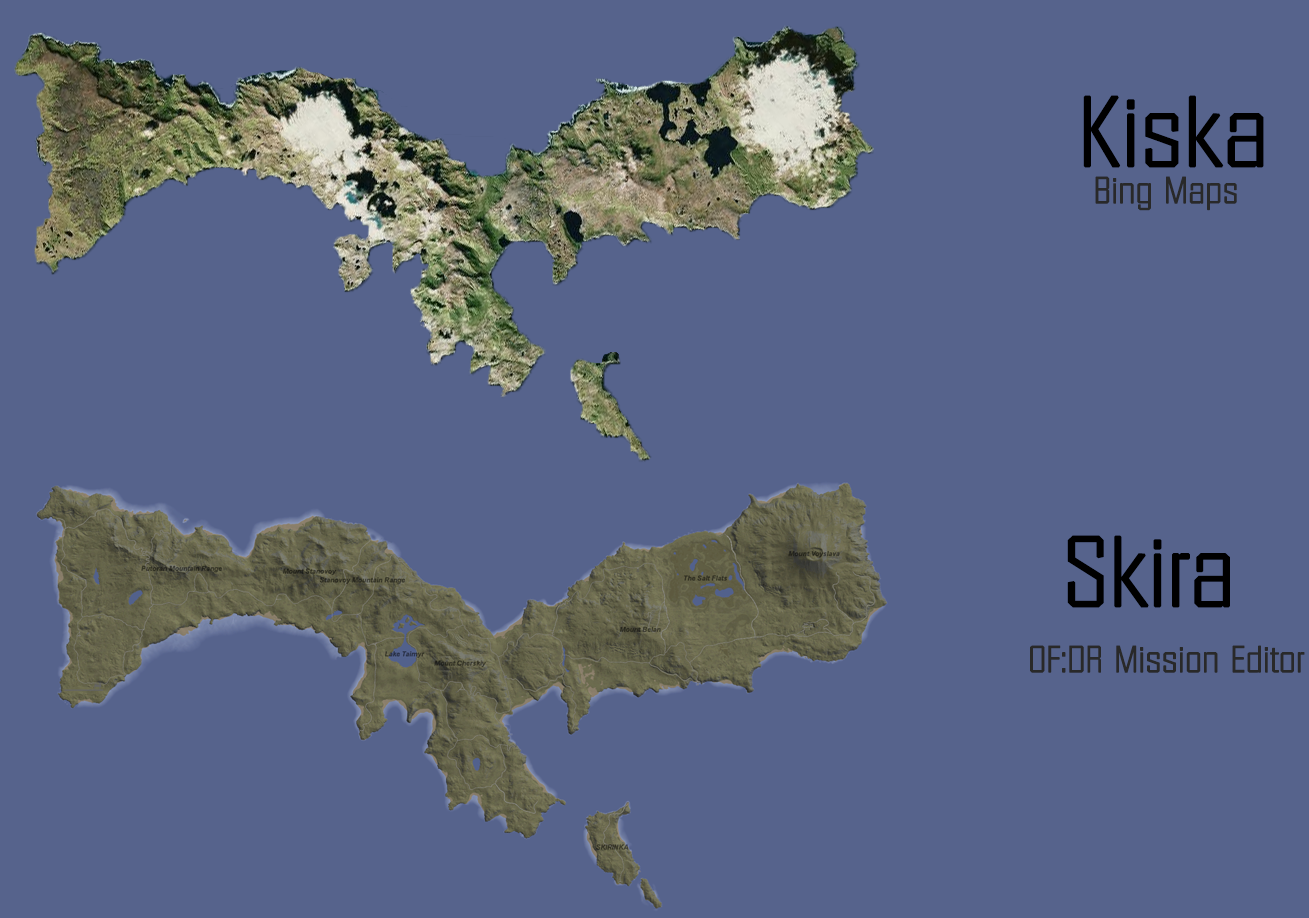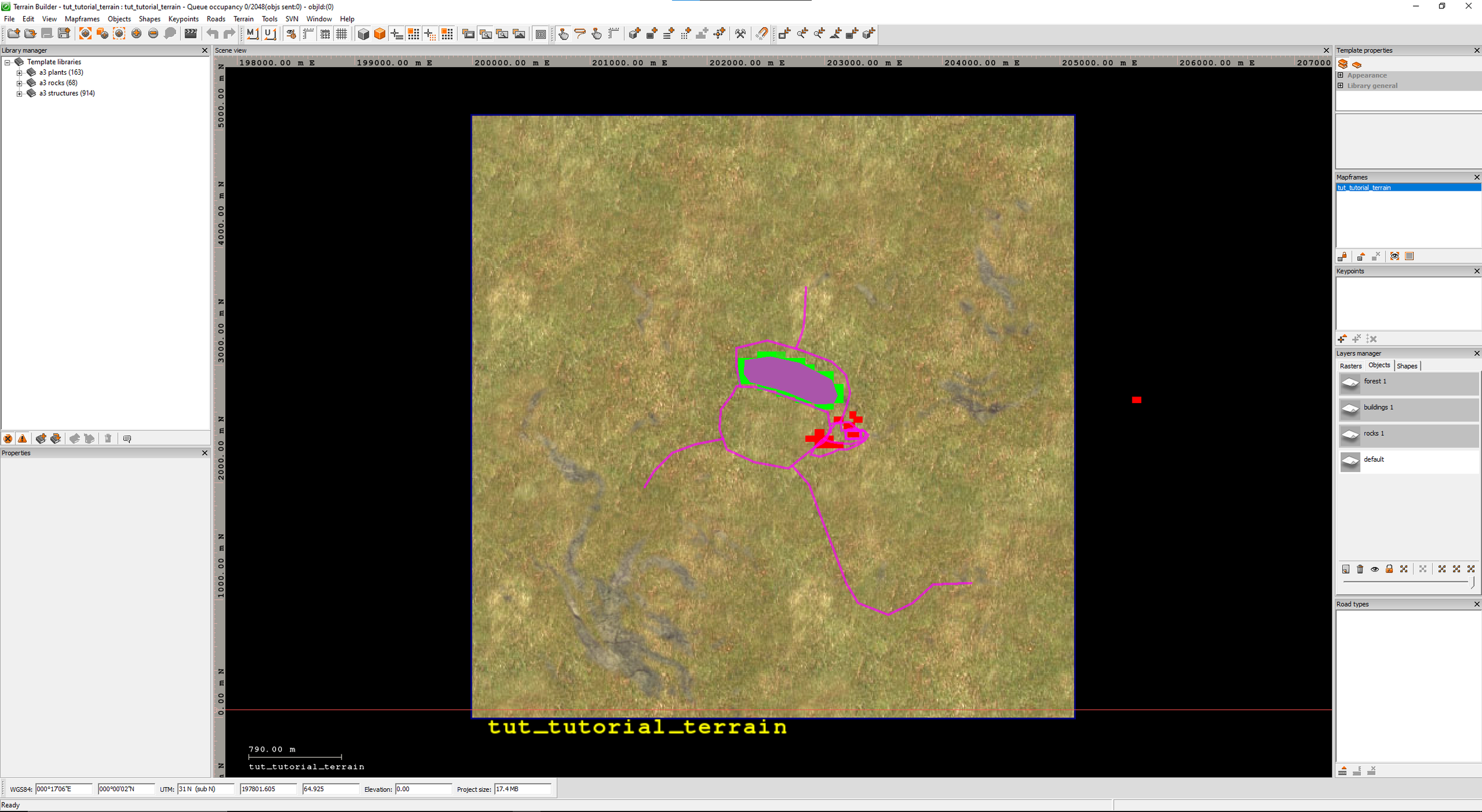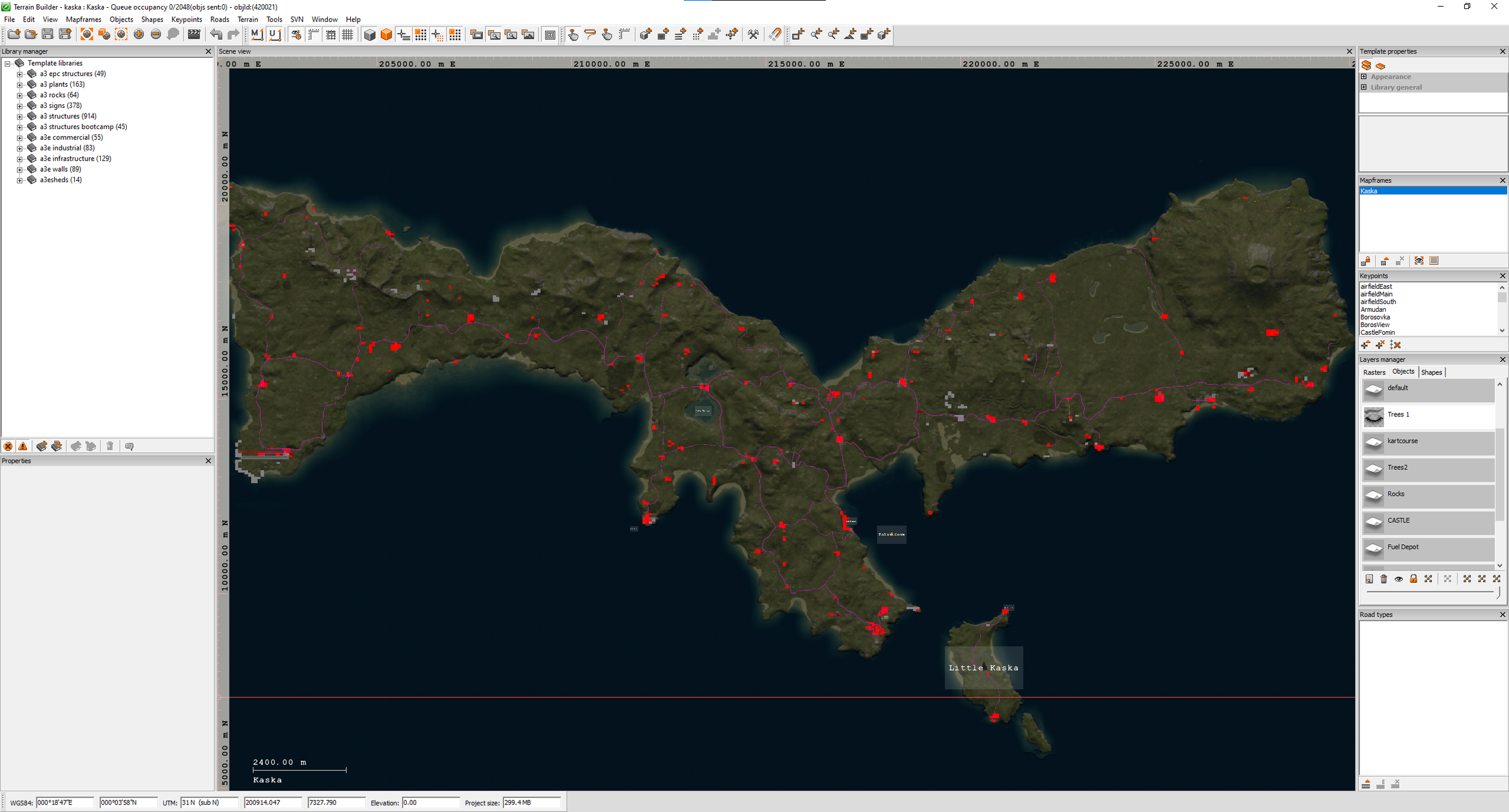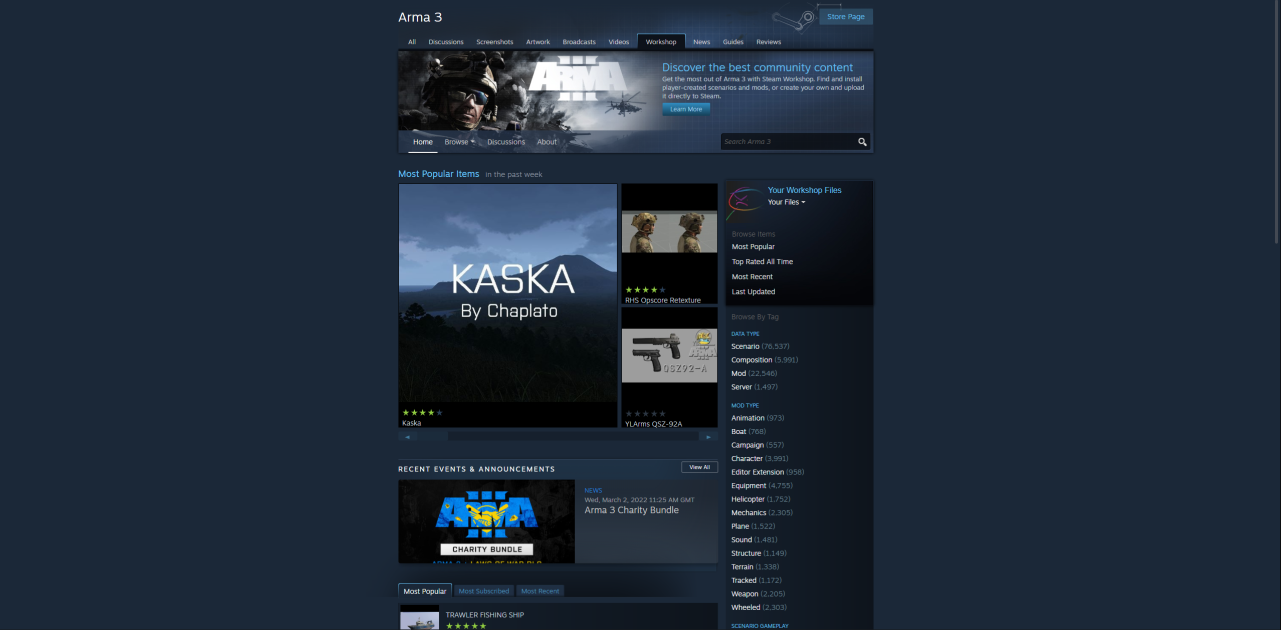[8] - Arma 3: Kaska
Kaska: The Arma 3 Map Released
After over a year of learning how to make a playable map for Arma 3, the map Kaska is now available for download on the Steam Workshop: https://steamcommunity.com/sharedfiles/filedetails/?id=2846963826
Overview: Kaska: The Skira Revision
Kaska is a revision of Skira, a map from Operation Flashpoint: Dragon Rising, now playable in Arma 3, a military sandbox game by Bohemia Interactive.
This blog post takes you on a journey, learning about Kaska’s inspiration, Skira and where the idea to make a gigantic map started. This includes:
Story of Operation Flashpoint: Dragon Rising and its map Skira
Kiska - Skira’s inspiration
Skira and its relationship with Arma
Building Kaska
Releasing Kaska
Post-release of Kaska & the future
Situation: The Forgotten Dragon
In the year of 2009 a game called Operation Flashpoint: Dragon Rising (OF:DR), the sequel to Operation Flashpoint: Cold War, was released. This was in the same year as the release of Arma 2. Two different games - OF:DR was catered towards more accessibility and in addition to being released on PC, was also released on consoles. Arma 2 however catered towards military realism and was a military sandbox, later becoming the platform for the mod, and later standalone release of DayZ.
Of the two, the first game I played was OF:DR in 2009 on the PS3, and would later acquire it for the Xbox 360 sometime later. I would not play any game from the Arma series until 2013.
Dragon Rising Story
OF:DR was centred around the fictional island called Skira situated off the coast of Eastern Russia in the Strait of Tartary. Set in 2011, a destabilised economy turns the People's Republic of China to capture the oil-rich, Russian-occupied island of Skira. This ultimately leads the United States to intervene, to retake the island and prevent all-out war. If you want to know more about the background of Skira the Storyline video linked is a good visualisation.
Skira and Kiska
Image showing the comparison between Kiska and Skira
Skira, the island in OF:DR is a revision of its real-life counterpart, Kiska, an island as part of the Aleutian Islands of Alaska. Kiska, alongside Little Kiska, saw action during World War 2 where Japanese forces captured the islands, and subsequently recaptured by Allied forces. Aside from researchers, the island is uninhabited.
Skira largely follows the topography of Kiska. To the eye they are near identical, however, Kiska does not have a permanent populace and there are elements on Skira largely changed, assumably by the OF:DR developers to make for better gameplay. This includes terrain changes for roads and towns, and infrastructures such as fuel depots and the airfield.
Skira, like Kiska is very large, and for a game in 2009 would have been one of the largest terrains you could explore at the time. Spanning 30 kilometres across, the island would take a considerable amount of time to cross without ground vehicles or helicopters present in OF:DR. Thereby the map had a lot of gameplay to offer.
Skira and Arma
Operation Flashpoint: Dragon Rising, and its successor Operation Flashpoint: Red River (2011) did not see the same longevity and support compared to its Arma franchise counterpart. With fewer customisation and tools for content-creators, OF:DR was soon after sunsetted in 2010 and Multiplayer support was discontinued a few years later. This meant players wanting to play OF:DR would need to use alternative software to play the game with other users. This ultimately left the map of Skira to soon become lost to history.
Though Arma and Operation Flashpoint were similar games, the map Skira has not in any official capacity been present in either Arma 2, or the later release of Arma 3 (2013) or Arma Reforger (2022). This is largely due to OF:DR and the Arma franchise being made by two separate companies - Codemasters and Bohemia respectively. Unofficial ports were attempted to varying success, notably for Arma 2. Since then, no other challengers have taken on the task of making the map playable for Arma.
As it goes, Skira is a large map to recreate. Chernarus, a map from Arma 2 is 225km², Altis, a map shipped with Arma 3 is 270km² and Skira from OF:DR is 277km². All three were likely created with a team of skilled developers, and to take Skira into an entirely different game in 1:1 would be quite a challenge, wouldn’t it?
Objective: Port Skira To Arma 3
The Search For Skira & Arma 3 Content Development
The dream of playing Skira on Arma 3 started in 2015, 2 years after Arma 3 was released, and 7 years before Kaska, my own creation. As a regular player of the Arma 3 at the time, the search to find whether anyone had made the map playable was on. Some attempts as mentioned previously were made, albeit scaled-down, for Arma 2. No released version of Skira was made for Arma 3. Furthermore, a technological change in Arma 3 compared to Arma 2 meant that water sources were only present at sea level, meaning the attempted port of Skira for Arma 2 would not work without some alteration, and for someone with no skill in modding at the time, it was a false hope in getting it to run.
In 2017 an attempt to make a map, any map was attempted, by myself. Anyone who has tried to make content for Arma 3 will know it is hard to get the tools set up, let alone make a map. It did not go well, and numerous attempts to get the tools working led to nothing. The tools causing the issues were mainly Arma 3 Terrain Builder and setting up the drive to make projects.
Image - Terrain Builder with a loaded project of the first map I created using the ArmA 3 Ultimate Terrain Tutorial by PMC
In 2021, a newfound resurgence in inspiration to try and get the tools to work kicked in, and with the help of a very helpful tutorial containing all the steps to making a map I was able to not only get the tools to work, but go from A-Z and create a basic map. After this it was a case of what to make.
What Map Was Chosen?
It wasn’t long before deciding that the map to create for Arma 3 would be Kiska, Skira’s inspiration. This is where it was learned the reasons why the developers Skira made the decisions they did when making Skira, to make it playable and enjoyable. This included their moderate terrain changes to accommodate roads and settlements, as well as a dedicated airstrip.
Afterwhich, it was then decided to make Skira. Starting with a 2/3rd scale version, it was found that the steep gradients of Skira would be far too large should the map be condensed, as well as the only airfield on the map having a shorter runway. As a result, the map would therefore be a 1:1 scale version of Skira.
How hard could it be? As a matter of fact, pretty difficult.
Making A Map For Arma 3
To make a usable terrain Arma 3, and by association other Arma games, you need 3 types of maps:
A heightmap for the terrain
A satellite map used to show the map from afar
An attribute map to show higher-resolution textures when close to the ground
Combining the above three results into Arma 3’s Terrain Builder tool creates a walkable piece of terrain for Arma 3, but the job is nowhere near done. Now that the terrain is usable, the objects need to be placed. This includes trees, bushes, rocks, fences, buildings, signs and more.
Provided you have the time, know what tools are available and finding out how to use them, you can make a map for Arma 3.
Kaska: Skira 2.0
Image - Terrain Builder with the Kaska project loaded - in this image trees are hidden to show placed buildings (in red) and larger collections of rocks (in grey) and roads (in pink)
With no prior experience making a map, in hindsight, making a map the size of Skira was rather silly for a one-person project. All of the knowledge and skills making a map for Arma 3 would have to be learned on the fly, as well as the mistakes I would make as a map maker, as well as learn the journey the developers of Skira would have went on to create the behemoth of a map.
Each aspect of creating the map: map generation, road placing and location building was a constant iterative process, where each aspect could be always improved - the map could be more detailed, the roads smoother and the locations more vibrant.
As mentioned earlier, Kaska was not built in a day, a week, or a month. The entire project took over a year. This included a break to work on both Patterns and TD Town. Development started in April of 2021, paused around September of 2021 and resumed in March 2022 where gradually work increased up until the map’s release in August 2022.
Performant & Accessible
From the start, the decision was to ensure Kaska, despite its size, was performant and accessible to all.
For performance, locations would receive a fair amount of objects to ensure their replayability, whilst allowing other creators (in this case mission makers) to place their own objects where needed for their missions. As of release, Kaska 1.0 has 300k objects, and for a 277km² map is a considerably small amount. At last count, Kaska had 6.2k rocks and 294k trees, making for A 1:47 rock-tree ratio. Where the tree placements were generated, each rock had to be placed individually.
In addition to this, the map’s attribute and satellite maps are 16k, as opposed to being 1:1 with the size of the map, thereby reducing the file size of the map. As Kaska’s satellite maps were generated, no further detail would have been gained via having a larger texture size, however it would .
For both accessibility and performance, Kaska was made only using vanilla assets and not requiring the user to purchase any additional DLC or download any specific mod. This means that the only mod you would need to play Kaska, would be Kaska. Any user that owned Arma 3 would be able to download the map and play it. This means the map would not be held ransom to ever-changing mods with pallets of buildings, as well as keeping the map performant by using objects already inside Arma 3.
Map Generation
Image of Operation Flashpoint: Dragon Rising Mission Editor
Each of the maps (height, satellite, attribute) had to be made from scratch. This was done using L3DT - a terrain generating tool. From a heightmap an attribute map would be created, and using both a heightmap and an attribute map, a satellite would be created. This iteration would take a few months as the correct height for each location was cross-checked with the OF:DR Mission Editor that provided an exact height. In addition to this, using the OF:DR Mission Editor areas with grass/sand/rock were then transitioned onto the Attributes map that would generate more detailed satellite maps.
Large terrain changes were done in L3DT, whereas smaller changes such as terrain smoothing for roads and buildings were done inside the terrain editor for Arma 3.
Changing the attribute map, or the satellite map can be a long process. This is because for any change, big or small, the map must be imported back into Arma 3’s terrain editor, compiled, exported, and then compiled into a packaged map. To cut down on this time, Kaska’s textures are 16k. This means that the overall time to change each is significantly reduced, resulting in changes taking less time.
As an example, were one pixel to be changed on one of the maps, from that pixel being changed, to saving, to being able to play the map would be an estimated 45 minutes. This compares to placing one object on the map and compiling the map to be playable, which takes a mere 4 minutes. This is another reason why making a smaller map for the first time is encouraged as it means smaller changes can be made and quickly played as opposed to having to make larger changes, and wait and hope they work.
Locations
Image of library of images taken in Operation Flashpoint: Dragon Rising
To make Kaska, a lot of time was spent replaying OF:DR, this included the campaign as well as spending a large amount of time in the OF:DR Mission Editor, that allowed for placing playable units anywhere on the map, as well as vehicles. This allowed for taking screenshots and videoing key places and making notes on how to approach mimicking locations.
This aspect was done throughout the development of the project: Finding a location -> Gathering data and understanding -> Placing Objects and manipulating terrain -> Testing (and repeat).
In addition to the locations already on Skira, more locations were added including a go-kart track, a solar power plant, a diesel power plant, and a resort.
Roads
Image - Main road into Zolot on Kaska
All roads that are featured on Skira are included in Kaska. In addition to this, and to compliment the Arma 3 sandbox, more roads were added to connect the original roads to beaches, as well as new locations. This means that both the players and the A.I have better maneuverability around Kaska.
The bulk of the roads were placed by overlaying the Mission Editor’s map on top of the Arma 3 Terrain editor, and correcting the terrain thereafter.
Once all of the roads were placed, this meant baking the road into the satellite map. This is because each road, in layman's terms, is an object - go further away and it will fade, and if the road isn’t baked, you will just see the satellite texture where the road once was. As mentioned above, any road changes will ultimately need to be baked, as otherwise, the road will be in a different location when you move further away, and this means recompiling both maps, taking up more time.
Road signs would later be added in a follow-up update, mainly speed signs that were placed based on the density of the area and following the UK’s speed-sign placement where possible. This also included being considerate of placing signs near junctions to ensure A.I drivers would not drive into them.
Buildings
Image - Village of Madalesk on Kaska
The bulk of placed buildings primarily focuses on villages, towns and industrial areas. As previously mentioned the pallet of assets are largely from Arma 3 Vanilla (used on Altis and Stratis), and some from Arma 3’s Tanoa terrain. These are accessible to all users without requiring an additional download, as well as, being made by Bohemia, should be more performant and without issue.
The alternative to this would have been to use Arma 3’s Livonia assets which are more Eastern European than Arma 3’s Vanilla Mediterranean counterparts. With not having much experience using those assets with the maps inception it was decided to better play it safe with better-known assets. Compared to Skira, the Vanilla assets are certainly something different which in contrast helps differentiate Kiska from being a 1:1 of Skira, whilst keeping some familiarity to Arma 3.
Releasing Kaska
August 2022, come what may, was to be the release date for Kaska, and as the date drew closer, the items were ticked off of the Trello checklist, the final objects were placed and the map was compiled.
After fiddling with the Arma 3 mod publisher tool, used for submitting a mod to the Arma 3 Workshop, the map was finally up and visible to the public.
For the trailer inspiration was taken from the Arma 3 Tanoa trailer. The actual music for Tanoa, to my knowledge, was never released, but recently with the release of Arma Reforger a new soundtrack was released, including a song called ‘Tanoa’, a rework of the song used in Tanoa’s trailer. With some condensing of the piece from 1 minute 42 seconds to a mere 43 seconds, this was sufficient to create a simpler trailer than what was initially envisioned using the Dragon Rising original soundtrack. Overall the trailer took ~6 hours from shooting footage to a final render and upload to create, and in time for releasing Kaska on the 9th of August, 2022.
Kaska: Post-release
Image - Arma 3 Workshop with Kaska on the front-page (10th August 2022)
Since its release day, Kaska has had a significant amount of downloads by the Arma 3 community. In all honesty I did not expect a fraction of the downloads Kaska has since received and the community have been overwhelmingly positive about seeing Skira again.
The release coincided with a trip to the Edinburgh Fringe but I was keeping a close eye on the numbers as they trickled upward and for any comments of anything game-breaking (thankfully it was fine).
Since the release an update was posted on the 1st of October adding further woodland, road signs, military bases and addressing some issues with rock placement, notably rocks scaled ~20x + do not have correct collision. To fix this the scale was reduced and further rocks were placed to retain any larger rock placements.
Workshop in a nutshell
Workshop pages hosting mods/maps for certain games, in this case Arma 3, can range in their front-page design. For Arma 3 the front page shows the most popular item in the past week, and when searching for items, the first page the user sees is also the most popular in the past week. This gives new mods/maps an opportunity to grow when they are initially released.
At the time of Kaska’s release, it was one of the only terrains being released, and being the revision to Skira, a widely known map to previous Operation Flashpoint players it received a large amount of activity. This amounted to a positive feedback loop of the high amount of views/downloads amounting to the terrain being shown higher on the page, leading to Kaska ultimately becoming a front-page item as shown in the image above.
Image - Kaska Worshop statistics page as of 04/10/2022
The above picture is Kaska’s viewing/download statistics. A ‘Subscription’ is a user who has added the map to their Arma 3 mods/maps. After 10 days from release Kaska has since had ~48 new subscribers on average each day, users who have either specifically chosen to download Kaska or who are subscribed to a collection of mods, some of which also include Kaska. This number is added to the total unique subscribers to the mod. This does not include any downloads made externally or shared files, though Kaska is only available officially off of the Steam Workshop.
The map also has a daily average of 20 subscribers who keep subscribed to Kaska after downloading it, thus adding to the total of current subscribers to the mod.
Future for Kaska
It would be no surprise to many to know that Kaska has been released at a point where Arma 4, if the release date holds, will be released in just under 8 months, sometime in 2023. With that, what does it mean for Kaska? Were the efforts wasted making it for a game soon to be sunsetted? I do not think so. Kaska is now officially my first released mod and a lot of lessons have been learned along the way.
There are still aspects of Kaska I would like to improve, such as tree placement, and the quality of the satellite map has a lot to be desired, such as fields and concrete, a skill I currently lack and have been unable to find tutorials on making said changes.
Kaska still has a few updates to go before it is fully polished, after which it is either a case of making a brand new map, looking to move my efforts onto Arma Reforger, or focusing on another project.









